Kūkulu Hale: Building Community Through Cultural Practice
Our kūpuna taught us that the three most important things that determine the wellbeing of ka poʻe Hawaiʻi, or the Hawaiian people, are the waʻa for travel and fishing, the ʻāina for crops, and the hale for shelter. Over time, the traditional Hawaiian hale was less favored and was replaced by western style houses. The traditional indigenous Hawaiian architecture almost became a lost practice.
Francis Palani Sinenci, or Kumu Palani, a Maui native, is the only certified Kuhikuhi Puʻuone, master hale builder in the Islands today. Traditionally, the Kuhikuhi Puʻuone was the architect, the engineer, the builder, and the teacher, all in one person and this is who Kumu Palani is. Over decades, he has revitalized the artform of kūkulu hale, building traditional houses, teaching dozens of practitioners to perpetuate the practice.
This summer, under the direction of Tiana Henderson, one of Kumu Palaniʻs trained alakaʻi (leader/apprentice), Maunawila Heiau Complex’s summer interns, participating in a five-week paid internship program called Maunawila ʻŌpio, constructed a traditional hale using traditional techniques and materials. Just like our kūpuna, we used materials that were available at Maunawila or in neighboring communities. The most important thing about hale is that something is created from whatever the ʻāina provided and then incorporated into different types of shelter. Most of the materials came from Maunawila and were harvested and prepared by the Interns themselves.
The ʻŌpio learned the different stages of kūkulu hale: harvesting, preparing the materials, carving, lashing, and thatching. They learned different Hawaiian values like mālama ʻāina, caring for the land and the land will provide us with what we need, in this case pōhaku (rock), lāʻau (wood), and lau (leaves or thatching materials); laulima, many hands working together to get the work done; kūkulu, to build. They worked hard manually hauling lāʻau, from the top of Maunawila, downhill to the entrance of Maunawila; debarked, treated, and weather proofed every piece of lāʻau; collected pōhaku from Punaiki and Maʻakua streams to build a pā pōhaku (rock wall); and learned the different lashing techniques used to hold the frame and thatching together; learned hale protocol which includes oli & haʻa. They completed a 8 ft x 12 ft hale in just 3 ½ weeks!
During this process, the ʻŌpio participated in the kanu nā pou blessing. This is equivalent to a groundbreaking ceremony. Before the pou, or posts, of the hale are planted into the ground, specific iʻa (fish), representing a different Hawaiian value, is placed in each hole. A kahu or priest continues to bless the space of where the hale will be built. Kahu Kalama Cabigon, another student of Kumu Palani, conducted the blessing.
This was a special project, not only for this program, but more importantly for our community. As we kūkulu hale we not only learn the traditional techniques, we are reviving this artform, reconnecting and strengthening one another, building pilina (connection/relationships) with our community, and spreading culture by sharing and doing.
ʻAʻohe hana nui ke alu ʻia, no task is too big when done together by all - ʻOlelo Noʻeau, Mary Pukui.
— Maunawila ʻĀina Educators & Stewards: Mamo Leota, Māhealani Keo, Ewaliko Leota, and Olivia Wallace
We are grateful to the City & County of Honolulu Grant In Aid, Hawaiʻi Tourism Authority’s Kūkulu Ola program administered by the Hawaiʻi Community Foundation, Southwest Airlines, and many, many individuals who have provided financial support for our work at Maunawila Heiau Complex.
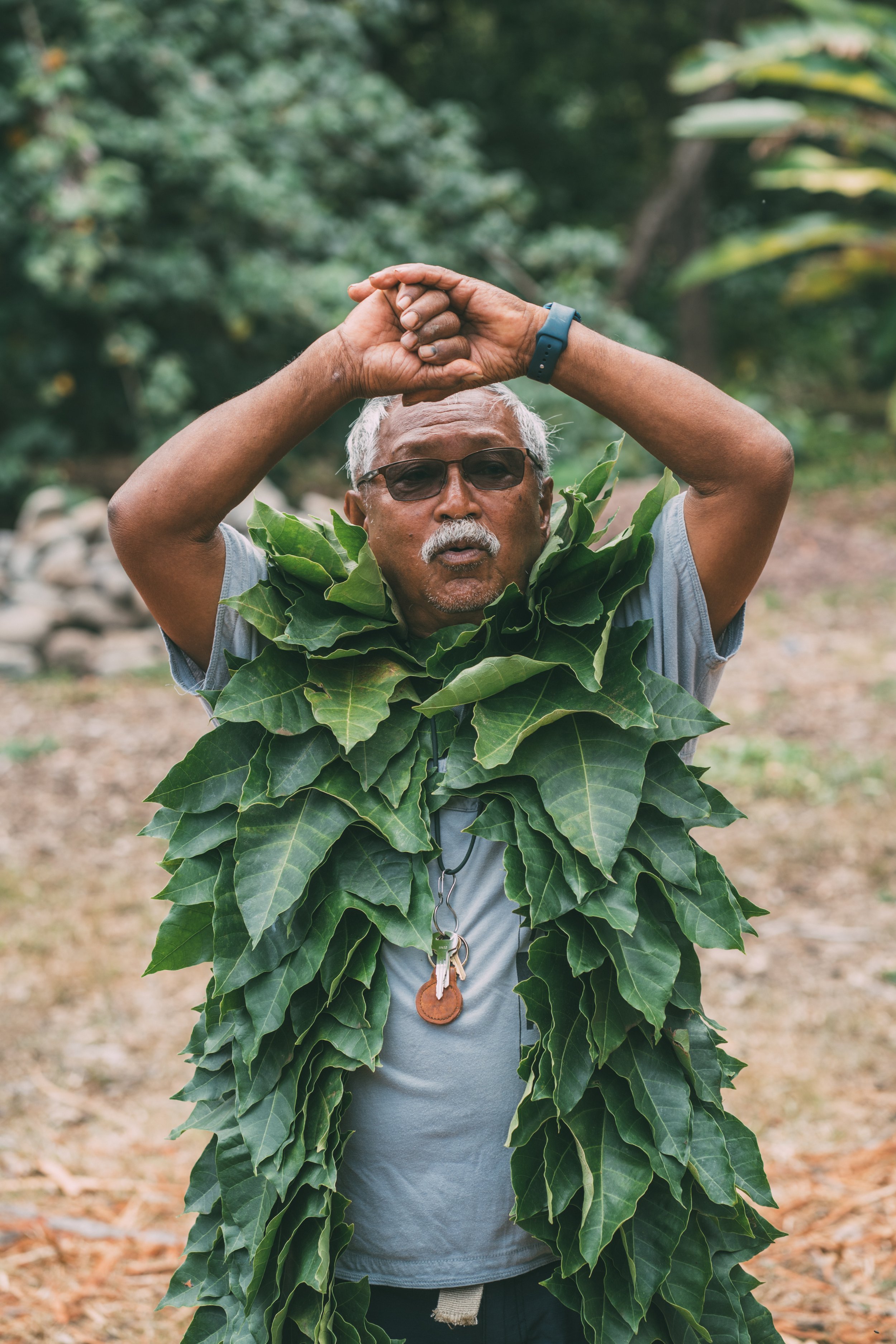
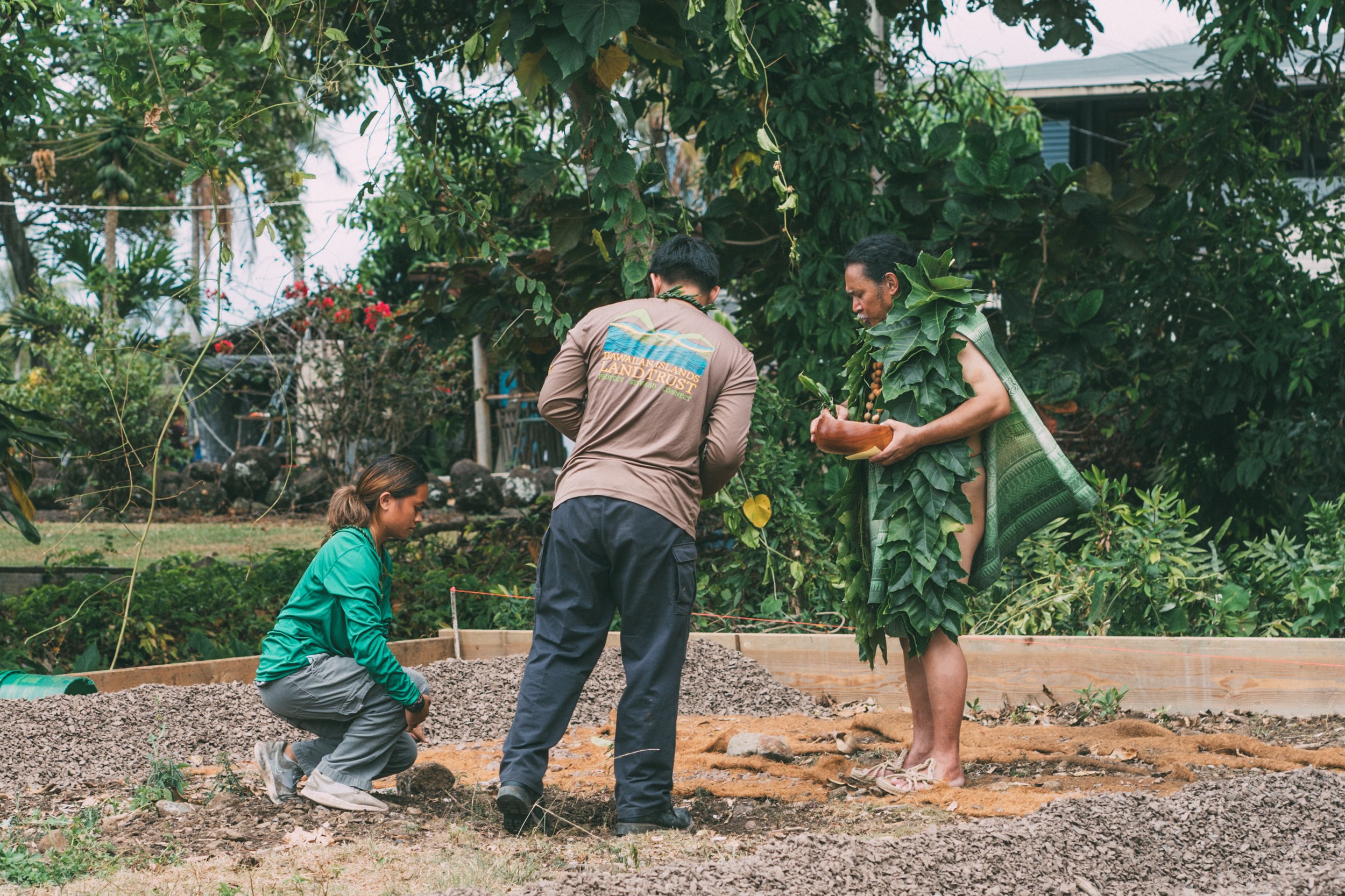
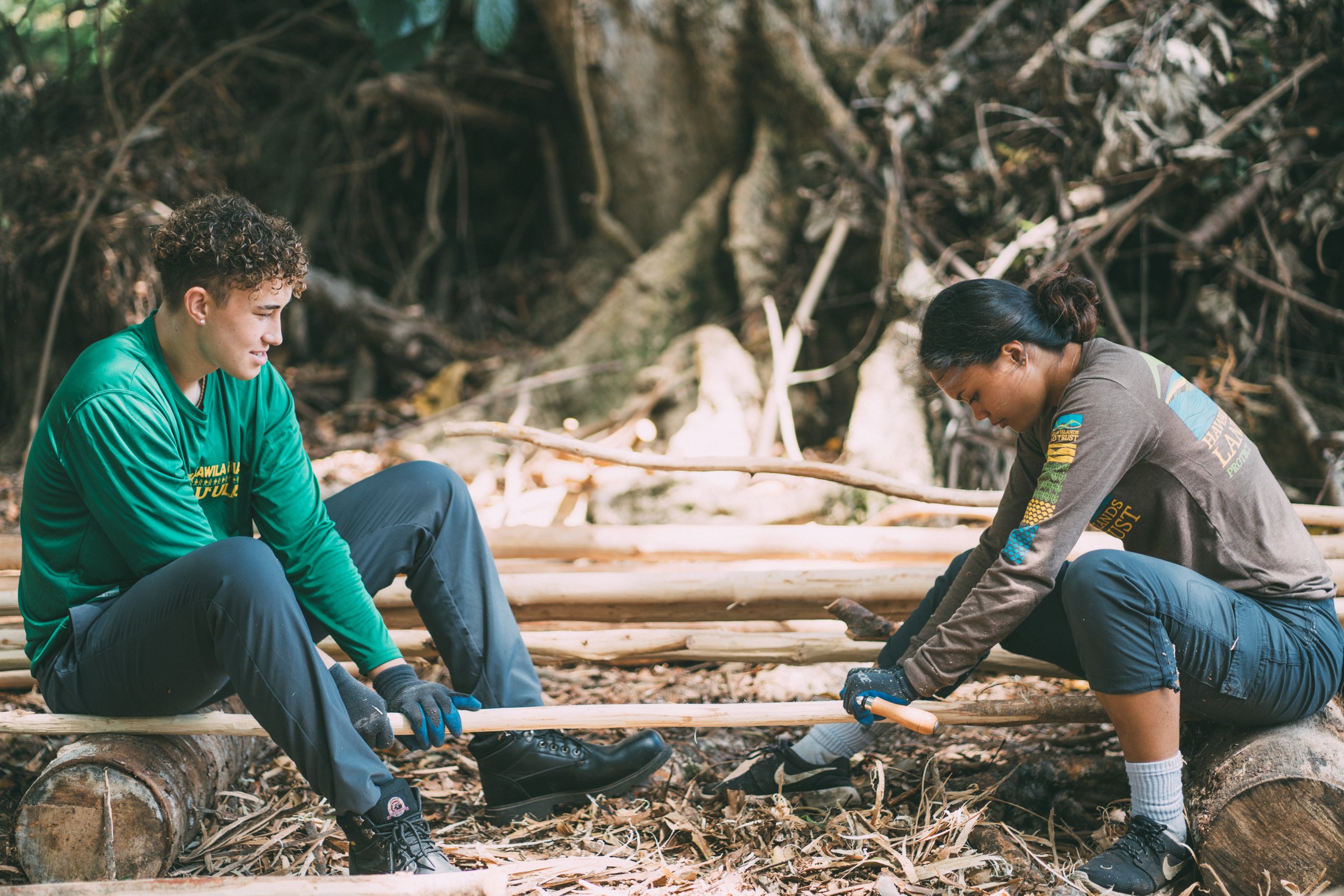
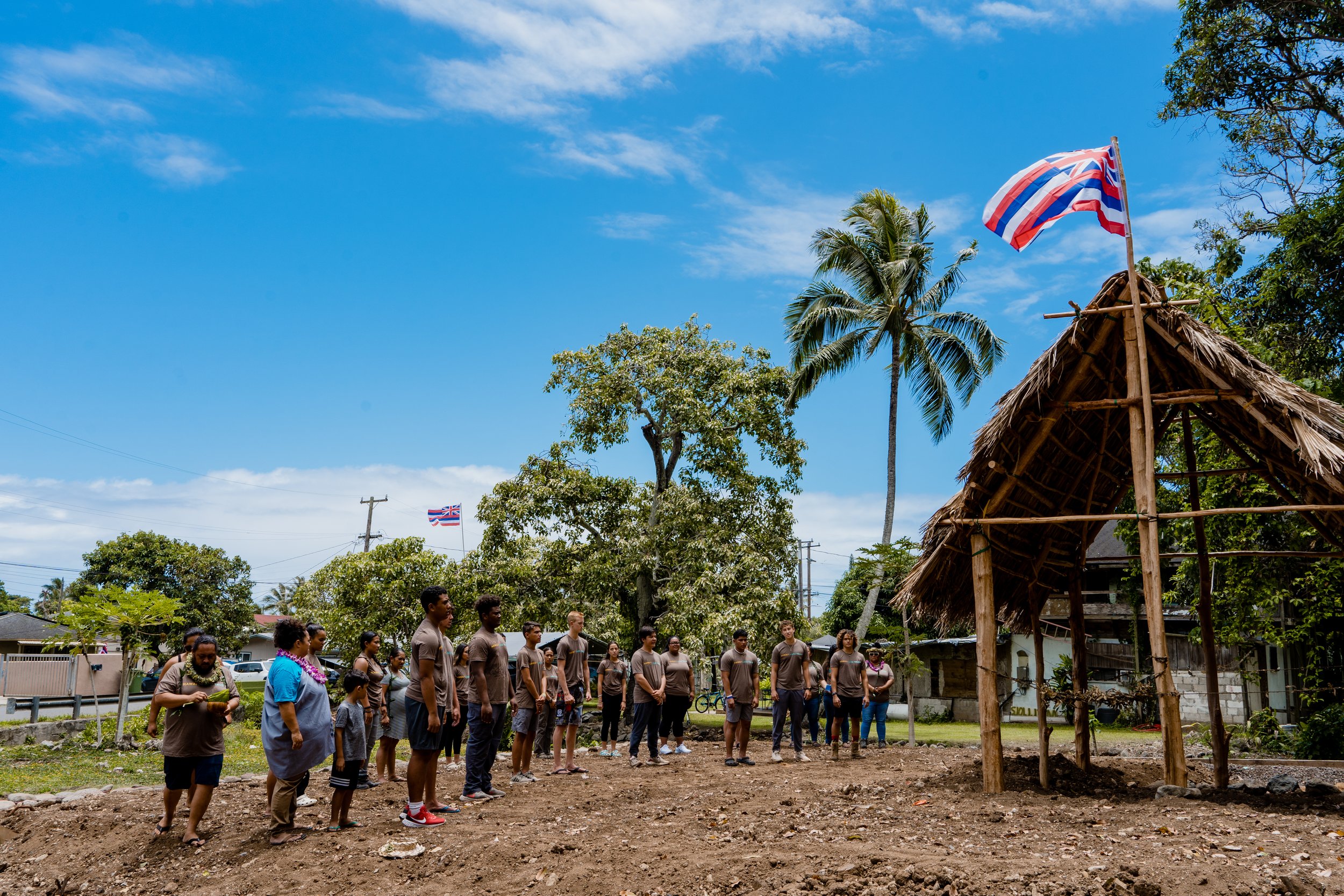
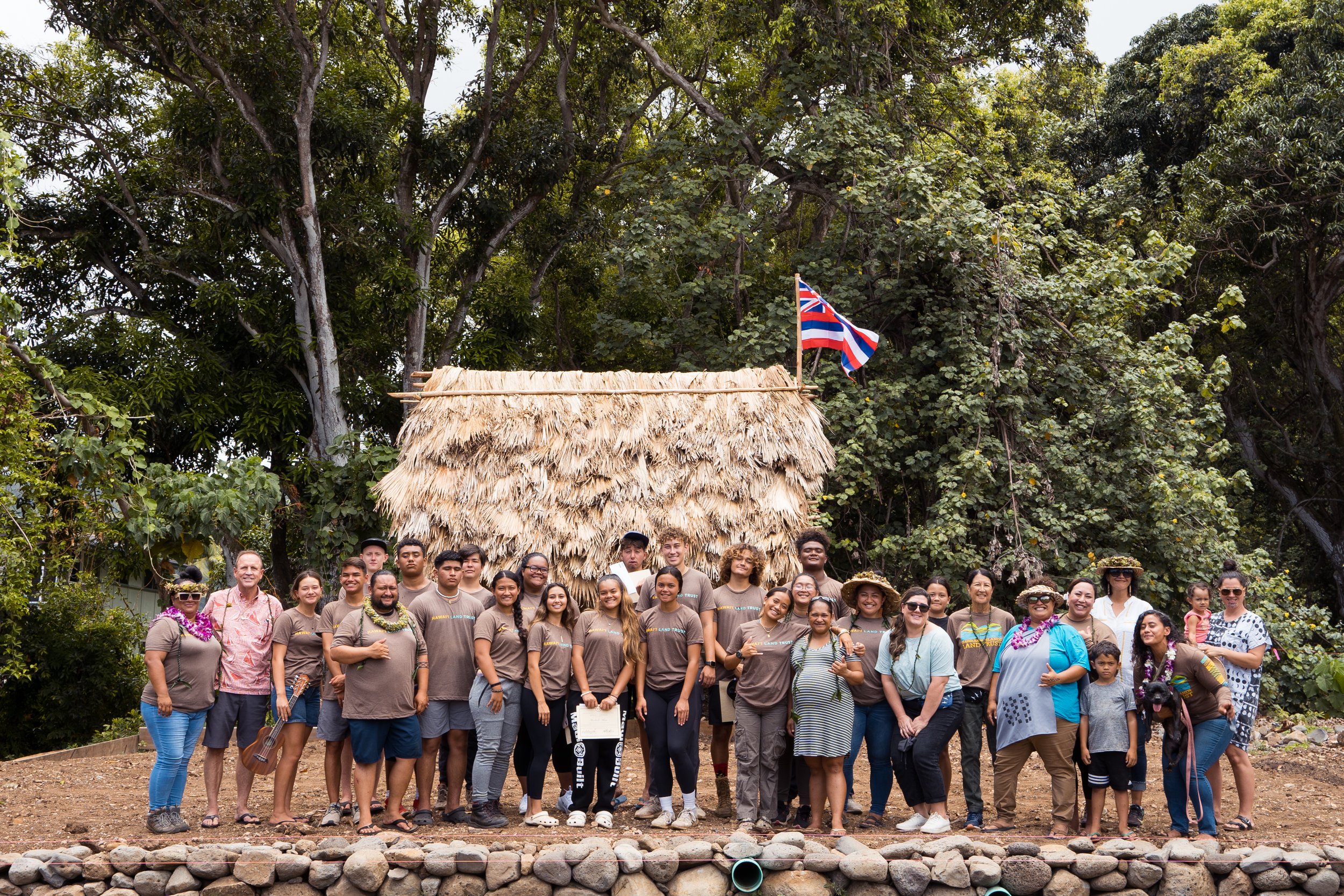
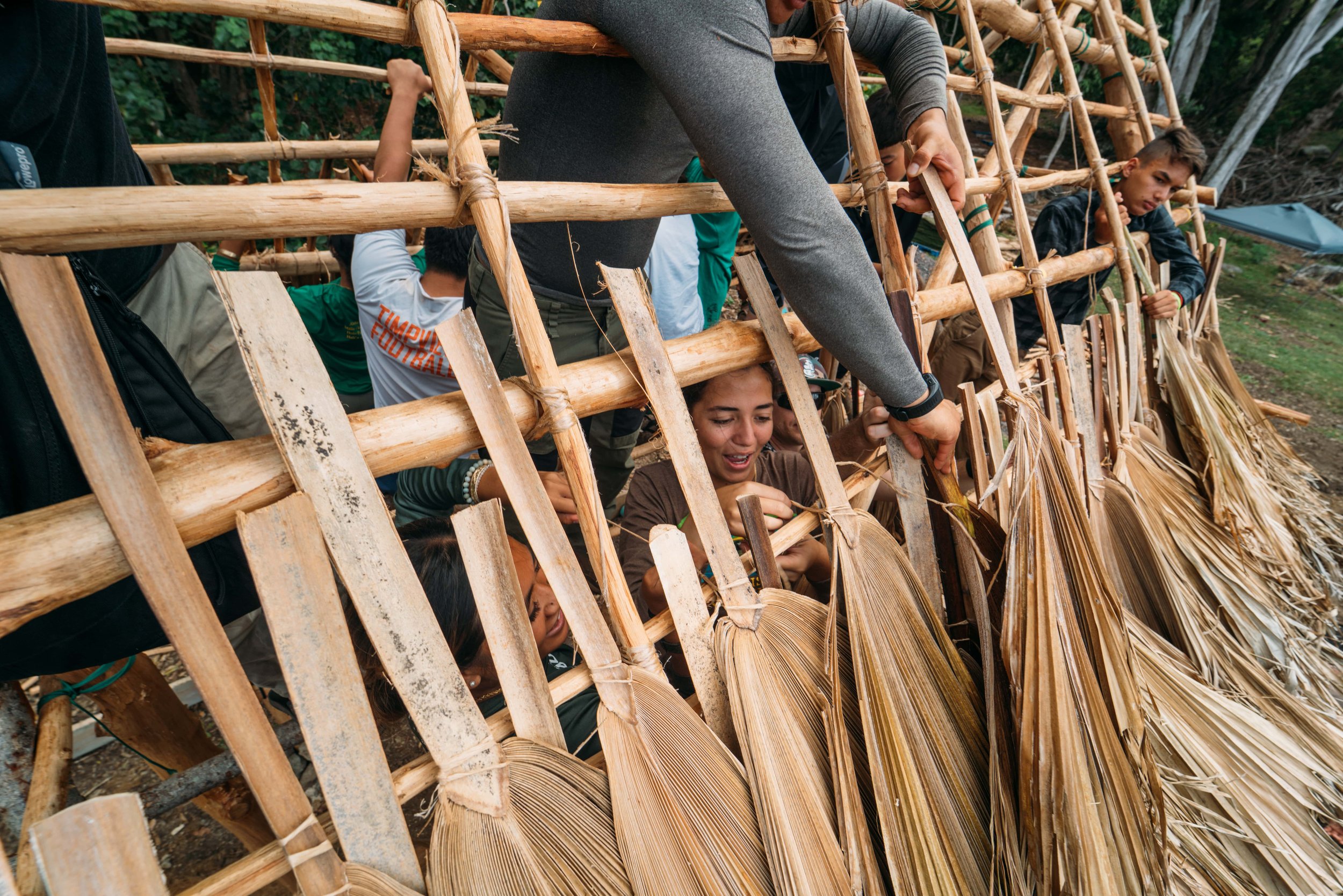
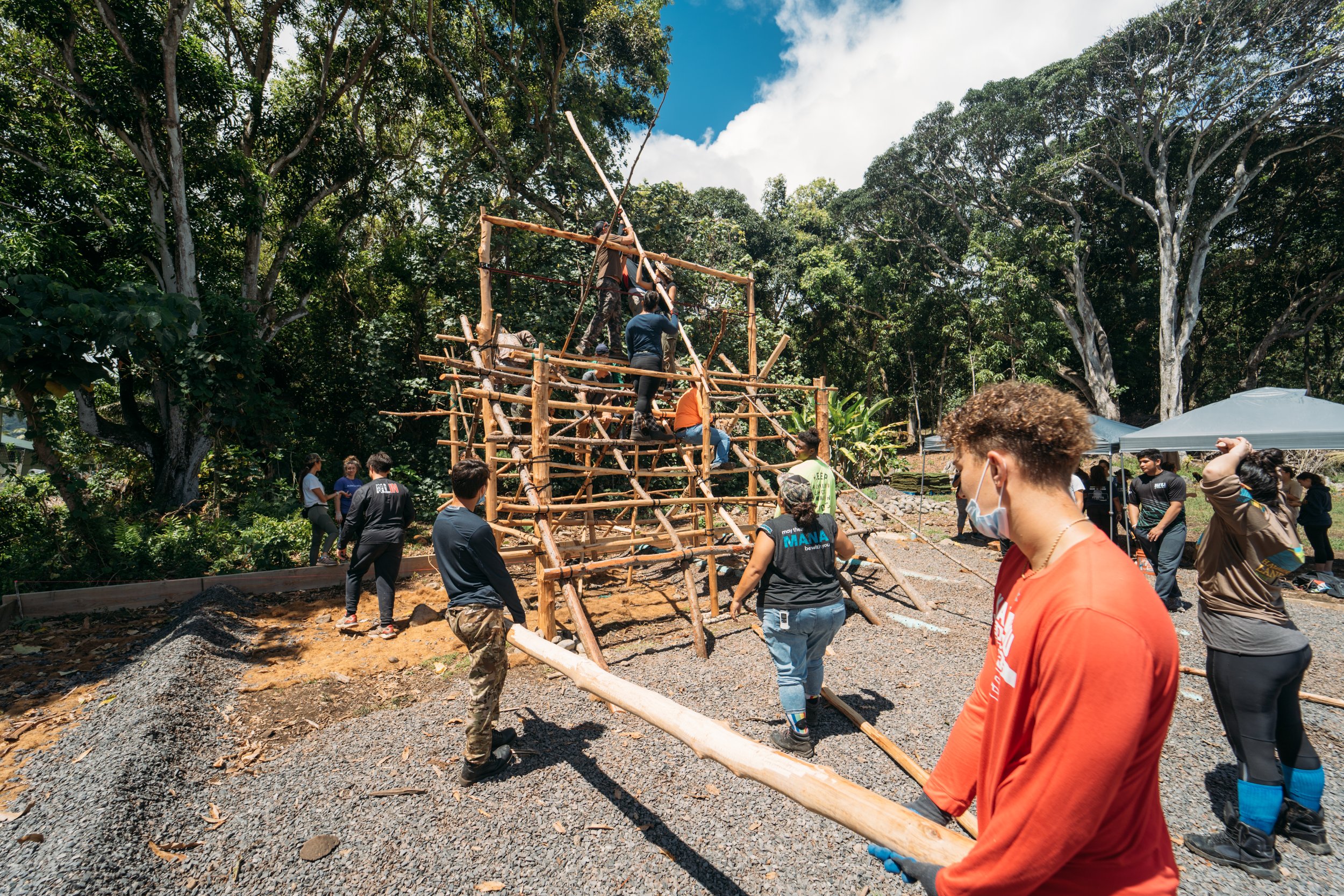
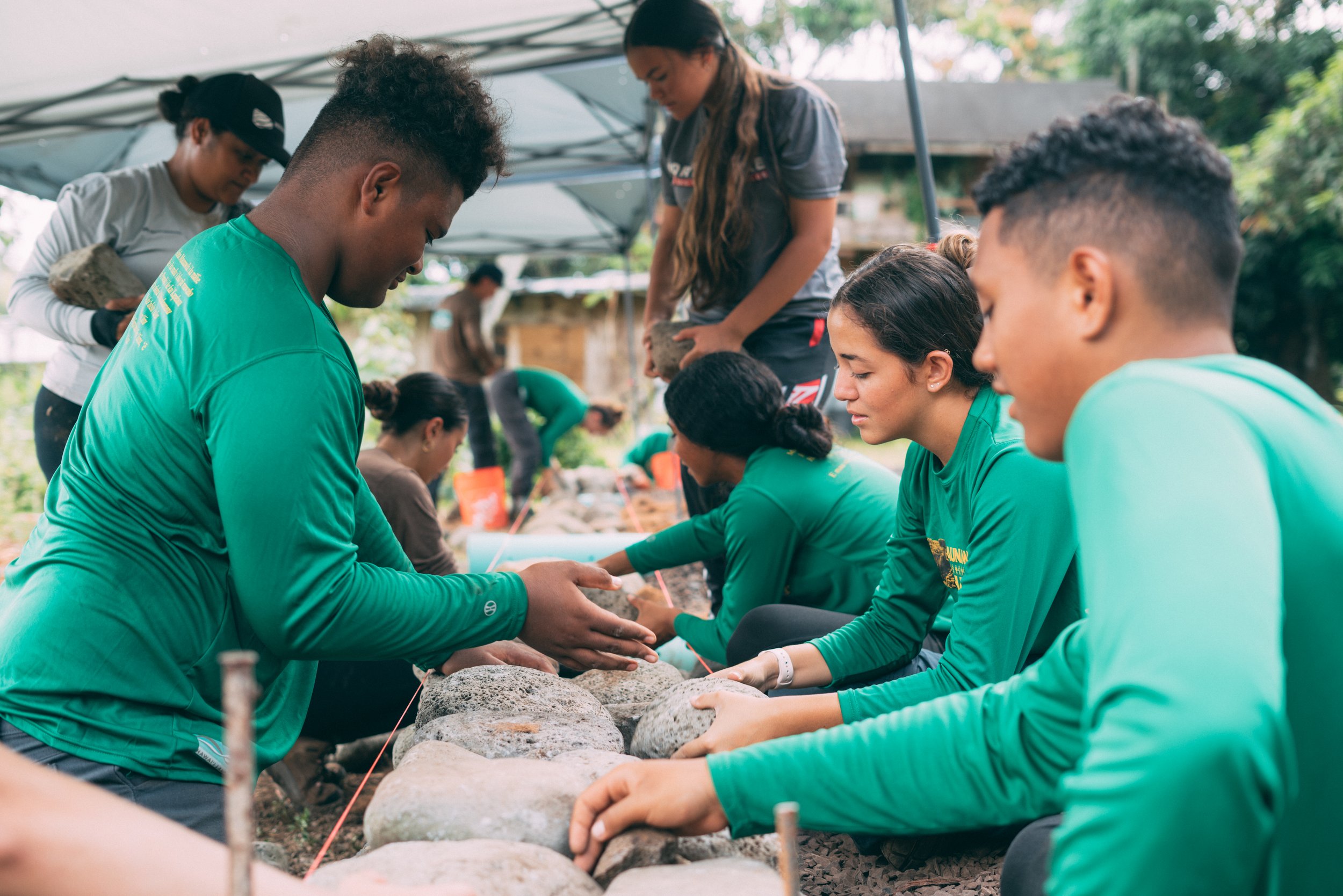
Photo Descriptions:
1) Kumu Francis Palani Sinenci
2) Kanu nā pou blessing by Kahu Kalama Cabigon
3) Ōpio debarking lā'au in preparation for hale build
4) Hoʻolaʻa Hale
5) Ho'ike with our 'Ōpio and special guests Anton Krucky, Director Honolulu City & County Department of Community Services, and Kehau Meyer, Program Officer, Hawai'i Community Foundation
6) Ho'omalu ka hale
7) 'Ōpio building the frame of the hale
8) Kūkulu pā pōhaku
